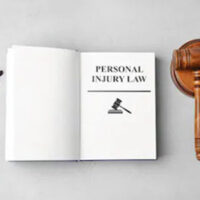How Superseding and Intervening Causes Affect Your Injury Case

Most people think that personal injury cases have an accident, someone who caused the accident, and injuries. But that’s an oversimplification, because while many cases do follow this pattern, many do not. Many have what’s known as intervening or superseding causes, and they can cause complications to what would otherwise seem like a straightforward injury case.
Multiple Wrongdoers
In the real world, there is often a “chain reaction” of bad events that leads to an overall bad medical result, and because of that chain reaction, there can be dispute over what really caused an injury.
Let’s say that an item falls on your head while you are shopping at Walmart. Your friend drives you to the hospital, but while you are on the way to the hospital, your friend drives carelessly, and gets you into a car accident. The ambulance comes, and you are taken to the hospital, where you are diagnosed with a herniated disc.
But who is liable for the herniated disc? Walmart’s careless and negligent stacking of its shelves? Or your friend, who drove carelessly and negligently, after the accident at Walmart?
Intervening and Superseding Causes
Your friend’s careless driving leading to the accident, was either an intervening cause of your injuries, or a superseding cause.
The difference relates to foreseeability. If in our example above the car accident is a foreseeable consequence of the original accident—something that, while unlikely, could conceivably happen–then it is an intervening cause, and Walmart, the original wrongdoer, is still liable.
But if the car accident is considered to be out of the ordinary, or completely unforeseeable, then it is a superseding cause, and thus, the negligent driver would be the cause of your injuries, thus absolving Walmart of liability. The negligent driving friend essentially “took the place” of Walmart, as the cause of your injuries.
Let’s back up, and go back to Walmart, where the accident happened. Let’s say that Walmart improperly and dangerously stacks items on its shelves. An hour later, a customer comes, ruffles through the items, and leaves them in a condition that they fall on you.
Now, Walmart may still be liable, because it is foreseeable that people will go through items on a shelf, and thus, the customer’s action was intervening, meaning Walmart remains liable to you as the cause of your accident and injuries.
Argument at Trial
Of course, it isn’t always easy to tell what is anticipated, or foreseeable, or anticipated, and what is not. So, when two actors combine to cause someone to be injured, there are often arguments over whether a post-accident event that contributes to the injury is intervening or superseding.
This often happens, when a patient goes to a hospital after an accident, and is a victim of malpractice. As a general rule, malpractice, though not common, is legally considered foreseeable, and thus, the original wrongdoer will remain liable, even where a victim is injured further because of malpractice.
We can help you find out who caused your injuries, or your accident. Call to schedule a consultation with the Tampa personal injury lawyers at Barbas, Nunez, Sanders, Butler & Hovsepian today.
Source:
forbes.com/advisor/legal/personal-injury/superseding-cause/




